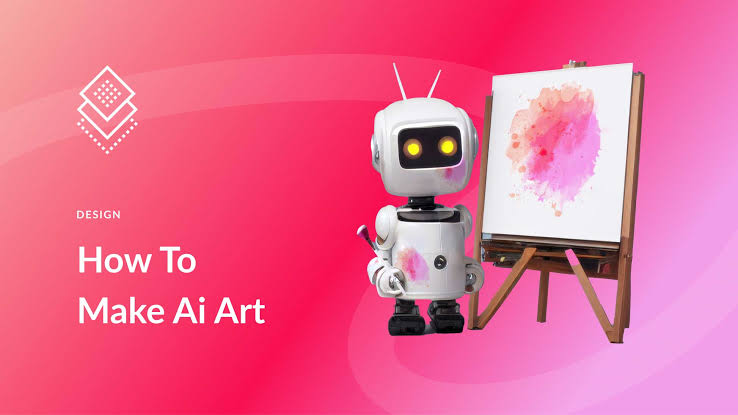Learn how to use AI to create artwork
Introducing various machine learning and computational methods have offered so much added flexibility, creativity and potential marvels in star images. It might be most important to recognize that AI is not “a one-size-fits-all” and “one-point-solution for our problems” but it is possible to leverage some of its strengths for creative help that juxtaposition between human and machine creativity.
Consequently, machinery can kindle our mental thoughts and that way human can come up with new creations, positive thoughts and can continue to have new creating ideas, which leads to positive impact for creating a human – machine collaboration.
The current landscape of AI and automation is dominated by structured repetitive tasks and increasingly, AI-generated images are utilized so as to save time spent on creating visuals. Among the various machine learning architectures out there, GANs are concurrently the most interesting and troubling.
Despite their potential utility, AI ethics researchers have begun to sound alarms about potential adversities associated with the capabilities of GANs, especially as advances in the technology equip bad actors with sophisticated deep fakes and other kinds of malicious applications.
Neural Networks
Neural networks, particularly deep learning models, have been instrumental in analyzing and synthesizing visual data. Convolutional neural networks (CNNs) are adept at recognizing patterns and features in images, making them useful for tasks like style transfer. Style transfer involves applying the stylistic elements of one image (such as a painting) to another (like a photograph), creating a fusion of styles that is both unique and visually striking. This technique has been popularized by applications like DeepArt and Prisma.
The Creative Process in AI-Generated Art
The process of creating generative art using AI involves several stages, from data collection and preprocessing to model training and fine-tuning. Artists and technologists collaborate to curate datasets, select appropriate models, and iteratively refine the output to achieve the desired artistic effect.
Data Collection
The first step is to gather a dataset of images that the AI will learn from. This dataset can consist of photographs, paintings, or any visual content relevant to the intended artwork. The quality and diversity of the dataset significantly influence the final output.
Model Selection and Training
Based on the desired outcome, artists choose specific AI models, such as GANs or CNNs, and train them on the curated dataset. Training involves feeding the dataset into the model, allowing it to learn patterns, textures, and styles. This process can be computationally intensive and time-consuming, often requiring powerful hardware and considerable expertise.
Iteration and Refinement
Once the model is trained, it generates initial outputs that are evaluated and refined by the artist. This iterative process may involve tweaking model parameters, retraining with different datasets, or combining multiple models to achieve the desired result. The artist’s vision and intuition play a crucial role in guiding the AI to produce compelling artworks.
Impact on the Art World
AI-generated art has sparked considerable interest and debate within the art community. It challenges traditional notions of creativity and authorship, raising questions about the role of the artist and the originality of AI-generated works.
New Forms of Expression
AI has enabled artists to explore new forms of expression and aesthetics. The ability to generate complex, abstract patterns and lifelike images has expanded the visual language of art. Artists can experiment with styles and techniques that were previously unattainable, pushing the boundaries of their creativity.
Democratization of Art
The accessibility of AI tools and platforms has democratized the creation of generative art. Artists without formal training in computer science can leverage user-friendly applications to create AI-generated artworks. This has opened up new opportunities for a diverse range of creators to participate in the art world.
Market and Valuation
AI-generated art has also made waves in the art market. Notable examples include the sale of AI-generated artworks at prestigious auction houses like Christie’s. In 2018, an AI-generated portrait titled "Edmond de Belamy" sold for $432,500, signaling a growing acceptance and valuation of AI art. This has led to discussions about the criteria for valuing AI-generated works and their place in art history.
Philosophical and Ethical Considerations
The rise of AI in generative art raises several philosophical and ethical questions that merit careful consideration.
Creativity and Authorship
One of the central questions is whether AI can truly be considered creative. While AI can generate novel and aesthetically pleasing works, it operates based on patterns and data provided by humans. This challenges the traditional notion of the artist as a solitary genius and suggests a more collaborative model of creativity between humans and machines. Questions about authorship and intellectual property also arise, as it becomes unclear who owns the rights to AI-generated artworks.
Bias and Representation
AI models are only as good as the data they are trained on. If the training data contains biases, these biases can be reflected in the generated art. This raises concerns about representation and diversity in AI art. Artists and technologists must be vigilant in curating diverse and inclusive datasets to ensure that AI-generated art does not perpetuate harmful stereotypes or exclude marginalized voices.
Ethical Use
The use of AI in art also brings ethical considerations regarding its potential misuse. For example, deepfakes—AI-generated videos that convincingly mimic real people—can be used for malicious purposes, such as misinformation and defamation. Establishing ethical guidelines and standards for the use of AI in art and media is crucial to mitigate these risks.
